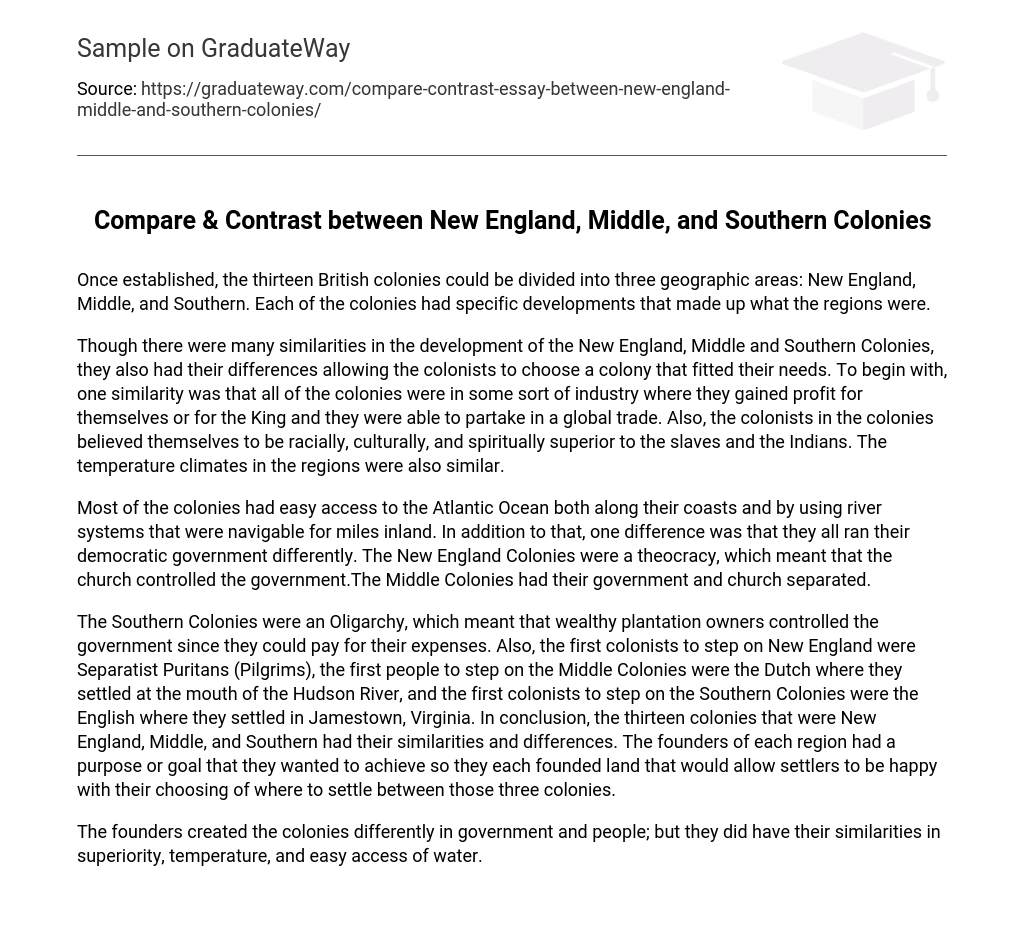The thirteen British colonies were divided into three geographic regions: New England, Middle, and Southern. Each of these areas experienced distinct developments.
Despite there being many similarities in the development of the New England, Middle, and Southern Colonies, they also had their differences, which allowed colonists to choose a colony that suited their individual needs. Initially, it is worth noting that all colonies were involved in some form of industry, through which they generated profit for themselves or for the King, and participated in global trade. Additionally, the colonists in these colonies perceived themselves as racially, culturally, and spiritually superior to both slaves and Native Americans. Furthermore, the temperate climates in all regions were alike.
The colonies had varying access to the Atlantic Ocean and river systems, as well as different governance structures. Specifically, the New England Colonies were governed by a theocracy where the church controlled the government, while the Middle Colonies maintained separation between their government and religious institutions.
The Southern Colonies were governed by affluent plantation owners, creating an Oligarchy. In the New England region, the original settlers were Separatist Puritans (known as Pilgrims), while in the Middle Colonies, the Dutch settled at the mouth of the Hudson River. Jamestown, Virginia, established by the English in the Southern Colonies, became their first colony. Despite their distinctions and resemblances, each region’s founders had distinct objectives when establishing their colonies. This enabled colonists to select their preferred location among the New England, Middle, and Southern colonies.
The colonies differed in their government and people, but they shared similarities in terms of superiority, temperature, and convenient access to water.





